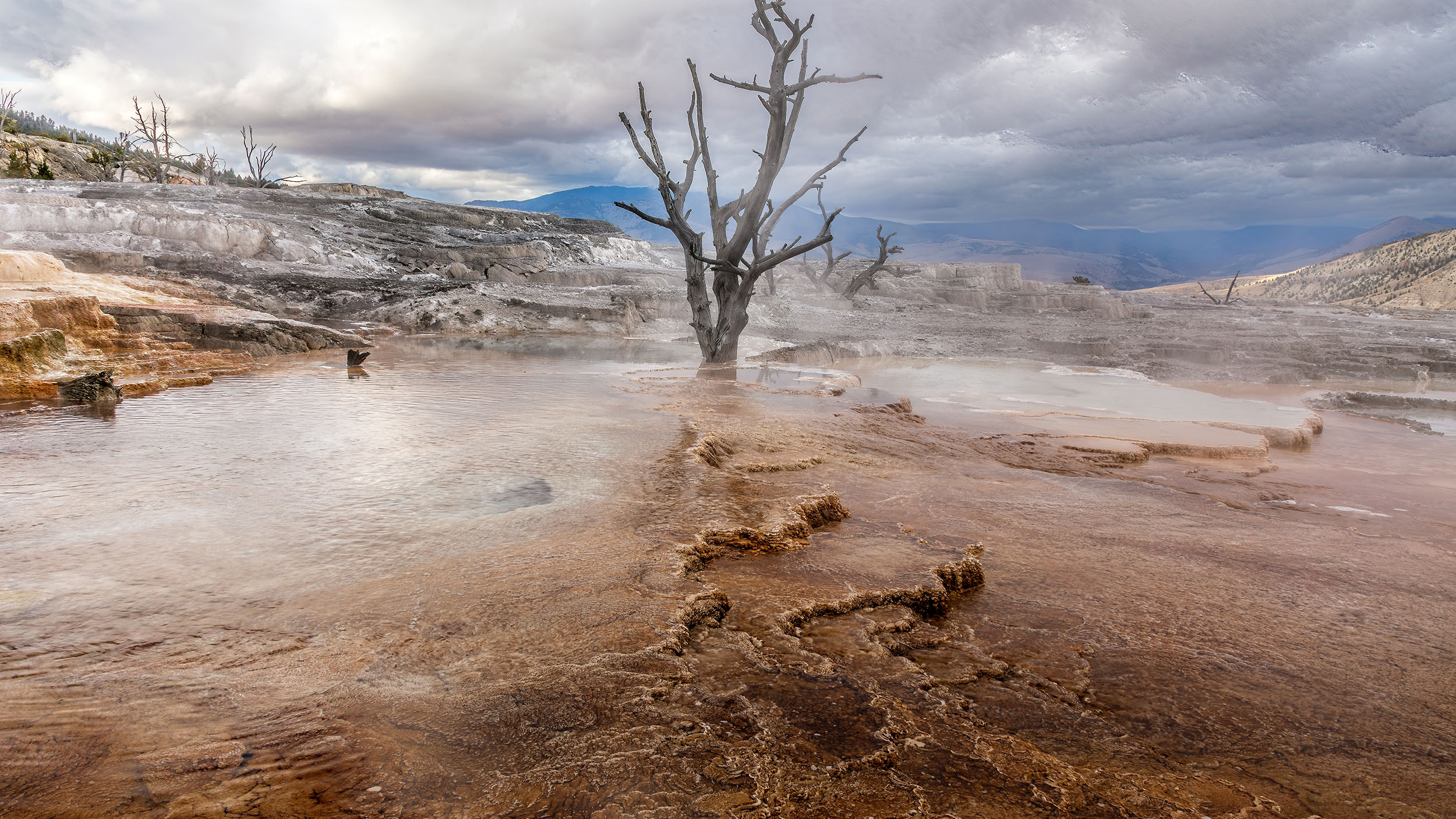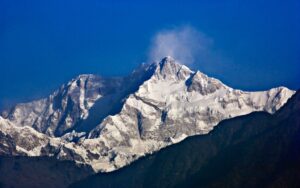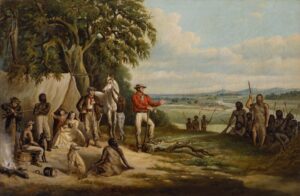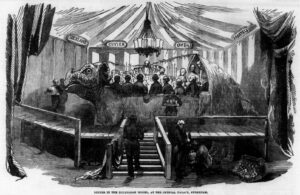Environmentalist and Pulitzer Prize-winning author Wallace Stegner once famously wrote, “National parks are the best idea we ever had. Absolutely American, absolutely democratic, they reflect us at our best rather than our worst.”
But Stegner has another quote that’s perhaps a little less well-known.
“The Devil had a good deal to do with the making of the West, if we may believe the [American] West’s place names,” he pointed out.
A search for “devil” using the United States Geological Survey’s GNIS Domestic Names Search Application revealed 239 mountains, rivers, creeks, washbasins, summits, forks, post piles, horns, islands, knobs, and lakes with devilish nomenclature. The search term “hell” turned up another 300-odd results. “Satan” got 11 hits, while swapping to the possessive “Satan’s” got another seven.
Curious to see how far I could take it, I typed in “brimstone” and discovered 44 hits, most of which, surprisingly, were in Vermont.
If I’d have been more specific with my search terms, I’d have turned up many more examples.
Devils Tower and other examples
The Devils Tower National Monument in Wyoming is likely the most famous hellish natural wonder, at least to American readers. Note the lack of apostrophe — it’s intentional, a geological naming convention that at least partially explains why geologists and English majors don’t get along.
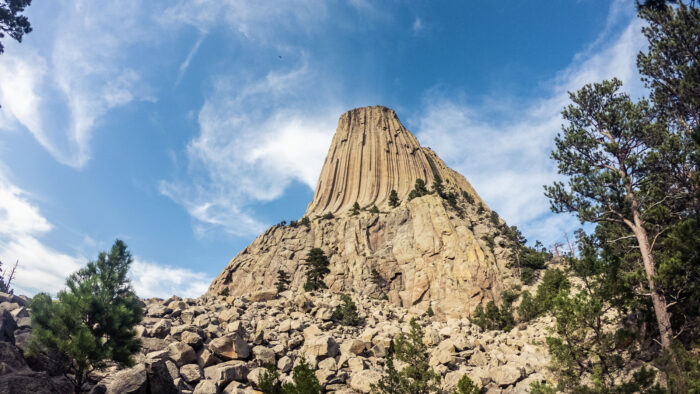
Devils Tower National Monument, Wyoming. Photo: Shutterstock
The imposing geological oddity is an igneous intrusion — a magma column that protruded through the surrounding sedimentary rock 40 million years ago and then cooled. As time rolled on, the soft sedimentary material eroded away, leaving behind the distinctive formation that appears on Wyoming’s license plates.
Cinephiles will know Devils Tower from its keynote appearance in Steven Spielberg’s Close Encounters of the Third Kind, but it gained fame early in United States history as the first designated National Monument.
Unsurprisingly, Yellowstone National Park, that home of perpetually bubbling geysers, sulfur, and boiling ponds, is also rife with references to the Christian idea of hell. Names like Hell’s Gate Sprouter, Devil’s Bathtub, and Little Lucifer abound. Many of them go back to the area’s early exploration by the first batch of white mountain men in the early 1800s.
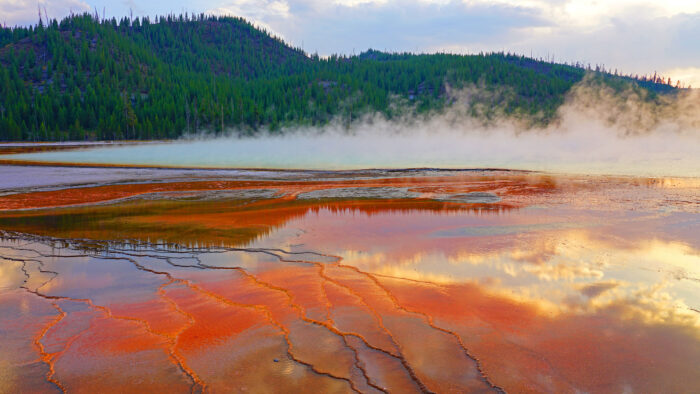
It’s easy to see why early white explorers with religious childhoods named so many features in Yellowstone after their idea of Hell. Photo: Shutterstock
But as Vermont’s surprisingly brimstone-rich place names indicate, the devil’s fork-tongued influence on U.S. maps isn’t limited to the arid West. Brimstone Creek is a waterway in Picket County, Tennessee. Satan’s Toe is a cape on the Massachusetts coastline, and Big Devil Swamp is a bog in Kalkaska County, Michigan.
The sheer prevalence of these kinds of names sparks the question: Why so many?
Three theories
The most obvious answer is religion. The Puritans, a hardcore splinter group of Protestantism, took the idea of the devil extremely, extremely seriously (see the Salem Witch Trials, among other things). The Puritans were some of the first successful white settlers in North America. Their fledgling colonies were mostly collected in the Northeast, but even the more business-minded early colonists in the South had various strains of Christianity firmly centered in their minds. America has remained a religious country, with various ebbs and flows, throughout its entire history, right up until the present day.
As the 1600s and 1700s gave way to the 1800s, and the descendants of those original settlers made their way westward, the salty, rough-and-tumble sodbusters who put English names to ancient places remembered their childhood Bible studies.
The Spanish also took their religion seriously. As they explored the American West from the other direction, they didn’t hesitate to name the sites they encountered with the devil’s moniker. Arizona has at least four distinct canyons with Diablo in the name.
As with Yellowstone, sometimes that was because certain geological features seemed to be visual reminders of the Christian idea of Hell.
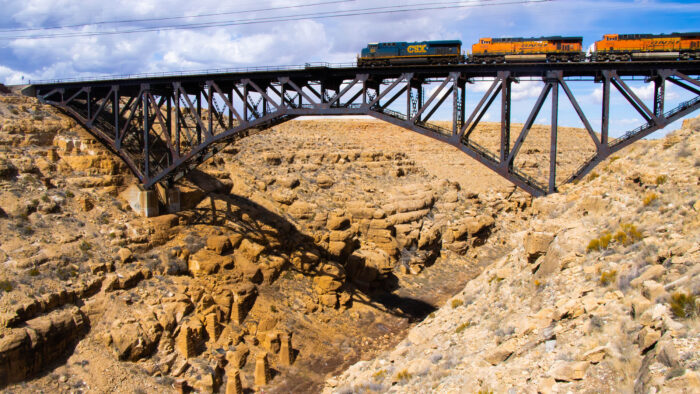
One of many canyons in Arizona with ‘Diablo’ in the name. Photo: Shutterstock
A devil of a time
Another theory is that some of the names came from a popular English expression.
“I had a devil of a time,” meaning something gave somebody a fiendishly difficult experience, is a phrase still in use today. But it was more prevalent in the 1800s, and it’s likely that the names of high mountain gaps, like Devils Pass in Nevada, sprang from early white explorers’ lung-busting efforts in getting up and over the things.
A third explanation could be simple mistranslation. Author and humanist Terry Pratchett has recurring funny bits in his books where he posits that many of the place names adopted by explorers come from misunderstandings with indigenous people.
This seems to be the case with Devils Tower. According to the National Park Service, an 1875 expedition led by Colonel Richard Irving Dodge concluded with an interpreter mistranslating one of the Tower’s more poetic Native place names as “Bad God Tower.” Later, that got simplified to Devils Tower.
All of which takes me to a final important point in this discussion.
Most, if not everything, named after hell and the devil already had names before culturally Christian, ethnically white folks showed up to the party. And most, if not all, of these names are just better.
Better names
The Cheyenne had a name for Devils Tower that translated as Bear’s Lodge, Bear’s House, Home of the Bear, or some variation. The Lakota and Crow people also had bear-related place names for the Tower. My personal favorite is the Kiowa place name, which translates to Aloft on a Rock — one that I believe the many climbers who enjoy the National Monument could get behind.
Efforts to rename Devils Tower have been ongoing almost since it was named Devils Tower, the most recent in 2015. However, despite the work of various organizations, the Tower retains its fiendish name.
There’s a tendency to view the renaming of American natural features as a recent liberal trend, an outgrowth of the increasing cultural sensitivity my home country is grudgingly undergoing. The many commenters who took to social media in the wake of the recent renaming of a mountain near my home certainly think so. Clingman’s Dome, the high point of the Great Smoky Mountains, is now back to its ancestral Cherokee moniker: Kuwohi (ᎫᏬᎯ), or Mulberry Place.
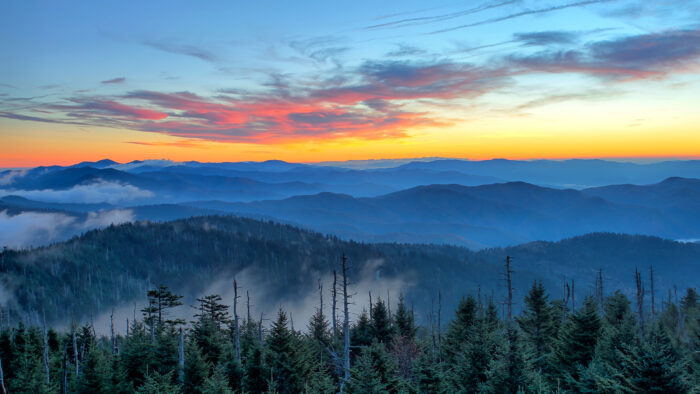
Sunrise from the top of Clingman’s Dome, now known as Kuwohi. Photo: Shutterstock
And let me tell you, a lot of folks here in North Carolina and Tennessee aren’t happy about it.
Woke or logical?
But I think we can safely dismiss critiques about reverting natural features to their Native names as a wokeness backlash. In fact, renaming these places isn’t woke; it’s logical. Yes, it’s about honoring the culture and history of the people who occupied these places for thousands of years. And yes, it’s about righting some wrongs.
But it’s also just about calling these places what they’ve been called for the bulk of their history. Two hundred years or so is a drop in the bucket compared to the thousands of years the Cherokee roamed the misty peaks of Kuwohi or the endless decades that Kiowa youths, with more bravery than sense, scrambled up the sheer faces of Aloft on a Rock.
Even the early English surveyors in the Himalaya knew that. They tried to preserve local names whenever possible. Everest is a notable exception, and there’s some debate over how exactly that happened. Andrew Waugh, the man who named it, claimed he couldn’t find a consistent traditional name. And for what it’s worth, Sir George Everest himself opposed the decision.
But setting aside all that, I submit that Native place names are just better — particularly concerning the hundreds of “hell,” “devil,” and “Satan” names that dot the map. The original names are more poetic, more in touch with the spirit of a place, and less representative of hardship and childhood nightmares spurred by religion.
Bear in mind I’m not trying to romanticize Indigenous people, particularly not in the “innocent savage-child of nature” way.
I’m simply saying that Native names indicate long and personal experiences with a place. Generations upon generations of birth and death. Marriages and murders, feasts and famines, centuries of human connection with nature. All of us who enjoy the outdoors want that kind of intimacy with the landscapes we enjoy.
So, to hell with it. I’ll take Aloft on a Rock over Devils Tower any day.
